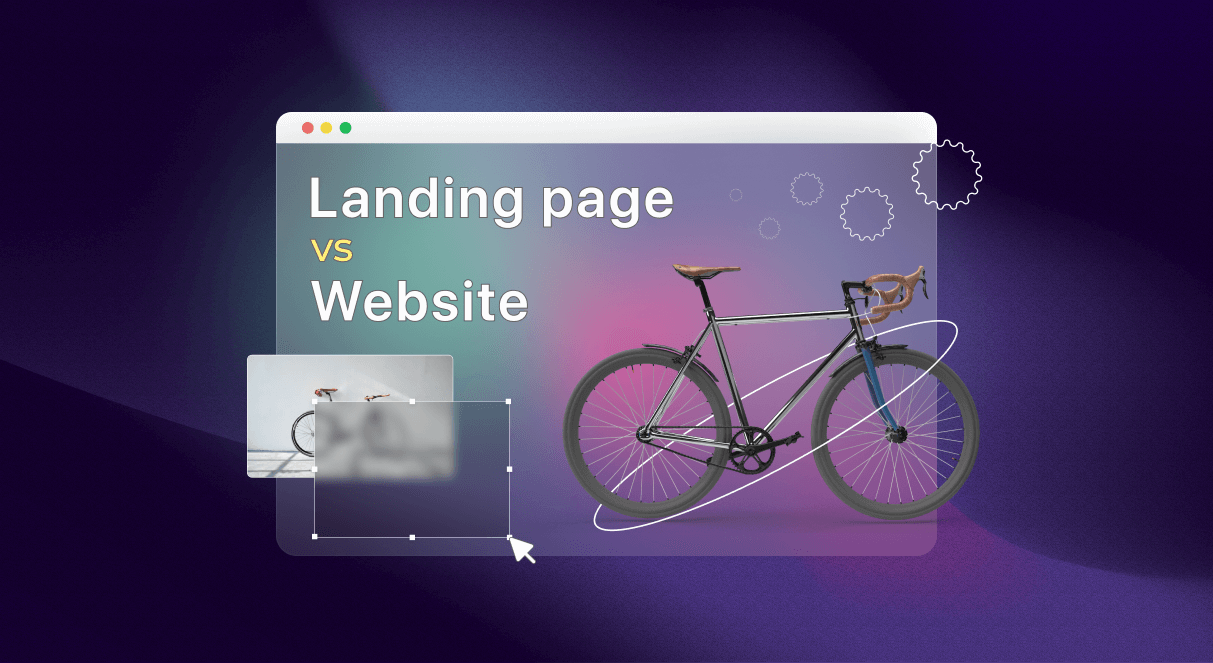
Landing Page vs Website: What's the Difference
If you have been tormented by the question ‘What should I choose: landing page vs website?’ — this article is for you! Below we will analyze the types of web resources, their differences, and main advantages, and also determine which option is right for you.
Contents
What is a website?
Technically, any online stores, landing pages, and other page formats on the Internet are all sites. From a business point of view, multi-page sites can be divided into several categories.
The main types of sites for business
Webmasters can identify several dozen types of sites, but we will limit ourselves to only the main ones.
Corporate or business website
This one is a more ‘bold’ site format, which may contain information about the team, technologies, distinctive features of the company, customers, and partners. A corporate website can have many tasks: from a brand-representing function to receiving orders. However, in most cases, a corporate website is created to present the corporate image.
When we compare the purposes landing page vs website, raising awareness about the brand is the feature they have in common.
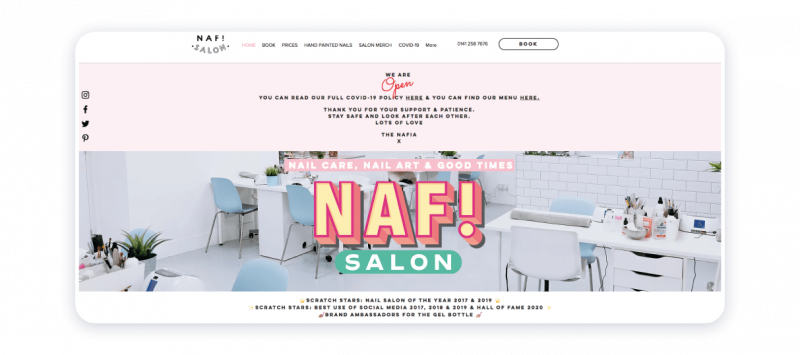
Example of salon website for a local based business
Online store
The task of the online store is to show the assortment and receive an order from the client. However, an online store is only suitable for a customer who is ready to buy and knows what they want.
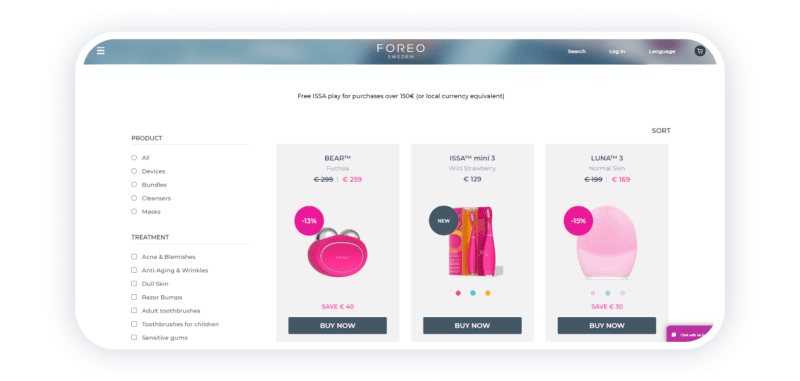
Online store example of the beauty-tech brand
Therefore, only hot customers who are ready to buy at the spot and now without specifying the details of the transaction are worth leading to an online store. These clients make up no more than 2-3% of all site visitors. The remaining 97% of people leave the site with nothing.
What is a landing page?
In most cases, a landing page is a site that consists of one page with no transitions to other sections or pages. When leads open the landing page, they have only 2 options:
- leave the landing;
- submit their application.
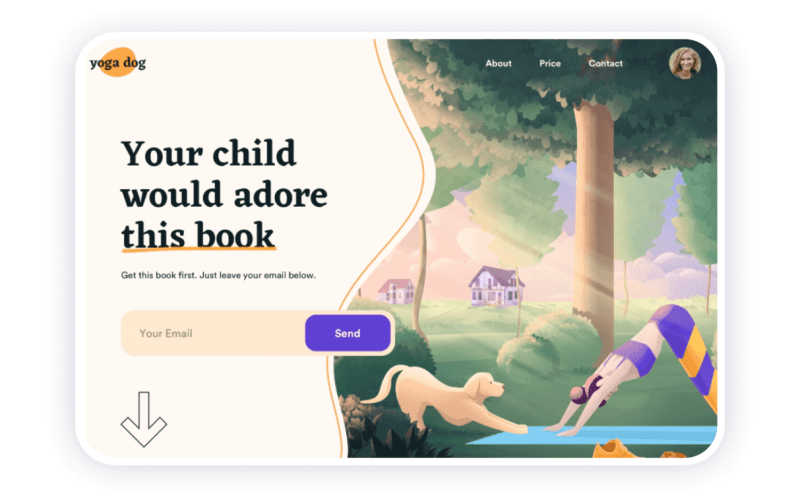
Landing page example
Therefore, the conversion of a landing page can be cosmic. We have explained the purposes of different websites above. A landing page vs website: how do they compare in these terms? The task of a landing page is to perform a specific target action that may differ from one business to another.
It should be understood that the landing page creates decides which target action is key for them or their company. If we talk about wholesales, filling out a brief will be the main purpose of the landing page. As for the retail sector, full online payment for a product or service can serve as the central purpose.
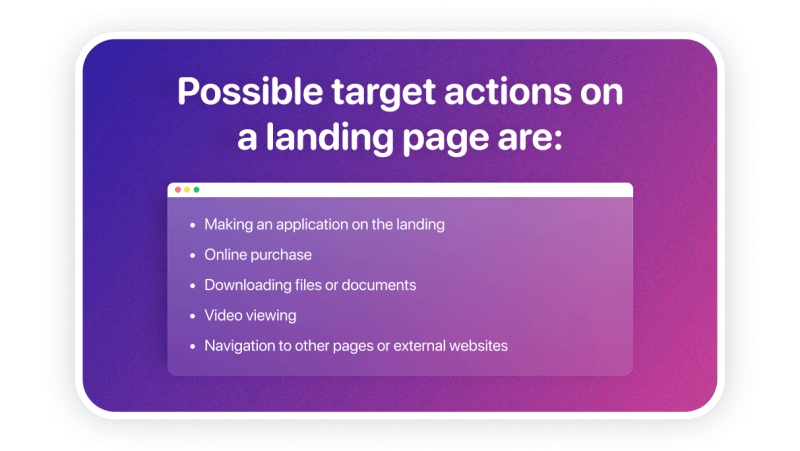
What’s the difference between landing page vs website?
Way to attract traffic
How do we search for sites? Most often a person opens a search engine, enters the request, and selects a site from the list provided. So, the landing page can be promoted only with the help of paid instruments (contextual advertising) — the first 4 positions on the search page marked as ‘advertising.’ Alas, in most cases you will have to forget about SEO, and this is a very serious loss in getting traffic to the website.
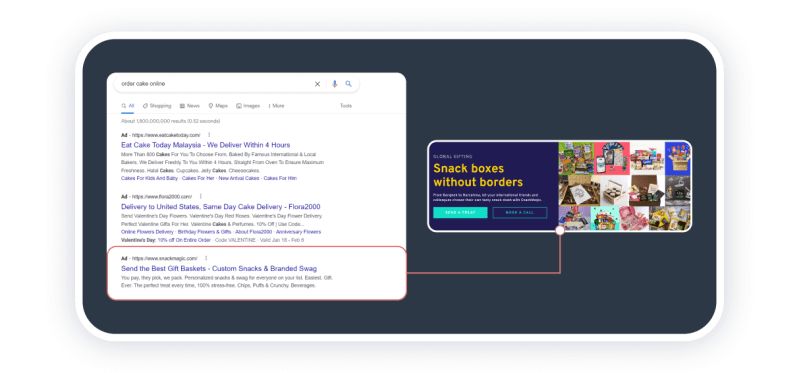
High conversion
Another difference we can name when comparing a landing page vs website is the user rate and the feedback you can receive. The landing page contains brief information that answers the main questions for the visitor: type of product or service, benefits, price, what are the benefits of purchasing, and how to buy/order. There are no factors in the structure of the entire landing page that could distract a person from the target action, due to which the conversion increases.
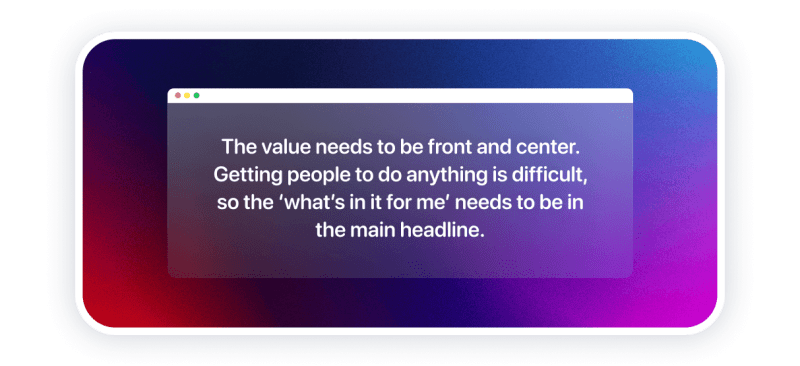
Creating a landing page is cheaper, and the effect is faster
A landing page is a full-fledged website, but due to its specificity, its creation lasts no more than a few hours if you do it with Weblium. Besides, the cost is one and a half to two times lower. In addition, the first visitors may appear in the first 2-3 hours after the launch of contextual advertising. The first visitors to a regular site, promoted by SEO, will appear no earlier than 1-2 months.
Call to action
Landing design, all construction blocks, and content focus the user’s attention on the main task of this site: to sell a service or product. The entire page encourages action and ends at a cherished ‘Purchase’ button.
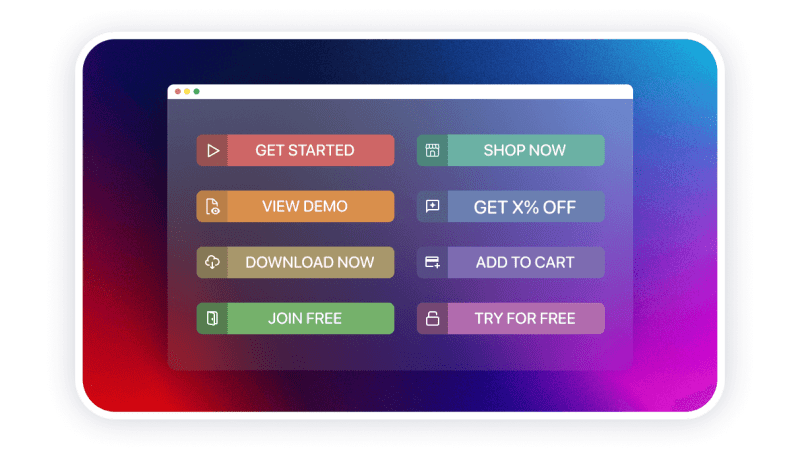
If we talk about a landing page vs website, the latter may do without calls to action. Very often, the website will contain a lot of information that you will explore gradually. It should have some stress points and solve the customer pains but the approach is softer.
Lack of navigation on the page
The landing page does not contain a navigation menu, as all information is placed on one page. The menu on the landing page should be highly practical as it will be used to scroll down to the desired logical block. However, this element can reduce conversion too, so you should be highly careful with such solutions. The clearer and simpler the landing page is — the better.
Bur for a website this is necessary to quickly and conveniently navigate through the pages and sections of the site. The landing page has no navigation to navigate to other pages. A one-pager is necessary to keep the visitor’s attention on one page and one specific product, and not spray it on other offers of the company.
Which is better — a landing page or a website?
It is impossible to say which of the types of websites is better. Each carries a specific purpose-designed for a specific business. If the goal is to sell a product or service as quickly as possible, then developing a landing page is the best option.
If you want to tell potential customers about the company, its advantages, and the advantages of each group of goods or unit separately, as well as several services, then, in this case, it is necessary to select a different type of site.
Landing page vs website: when to use a website
Creation of the company’s image
On the multi-page site, you will find detailed information about the company, products, shipping, and return options. If there is active traffic on the resource, users contact you through the feedback form or buy goods, this automatically raises the image of the resource.
Besides, multi-page pages with well-designed semantics are shown on the first pages in search engines, and this all has a positive effect on the domain rating. A well-designed website will always bring in new traffic, either through ads or a blog.
SEO promotion
A multi-page website allows you to run a blog or a current company news feed where you can talk about new products, production changes, and raise topics that relate to your business. When writing articles, you add search queries to the text and headings.
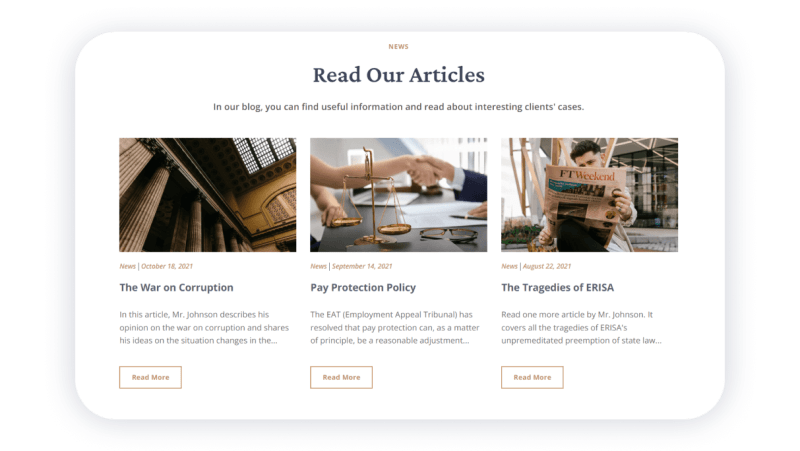
Website with blog functionality built-in
You should also write a title and description to every site page. If you have product pages, a newsfeed, and general pages, you can promote your site with SEO so that users can also find you by queries on the search network.
Possibility of placing a large amount of information
If we compare a landing page vs website, the latter hosts any amount of information. You should, of course, place the most critical points on the main page to catch the attention of the visitors as soon as they open your page. Then, use the rest of the pages to talk in detail about your services, benefits, and opportunities for the visitor.
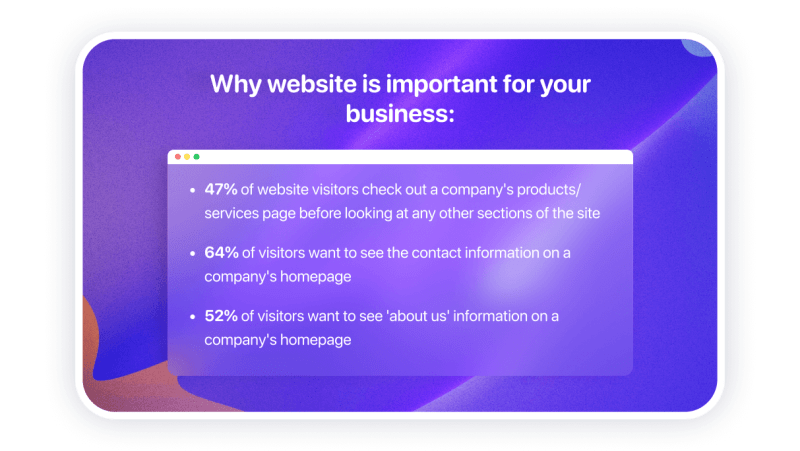
Winning loyalty and trust of customers
Multi-page sites inspire more trust among users. This is influenced by the availability of certificates, stories about the company, product reviews, brand pricing policy, contact details of managers, and other confirming information that the company is real.
Multiple monetization options
A multi-page site is promoted using contextual and targeted advertising, SEO, collaborations with bloggers or opinion leaders, email newsletters, and instant messengers. Thus, it is more complicated than the landing page and unites several communication resources in one.
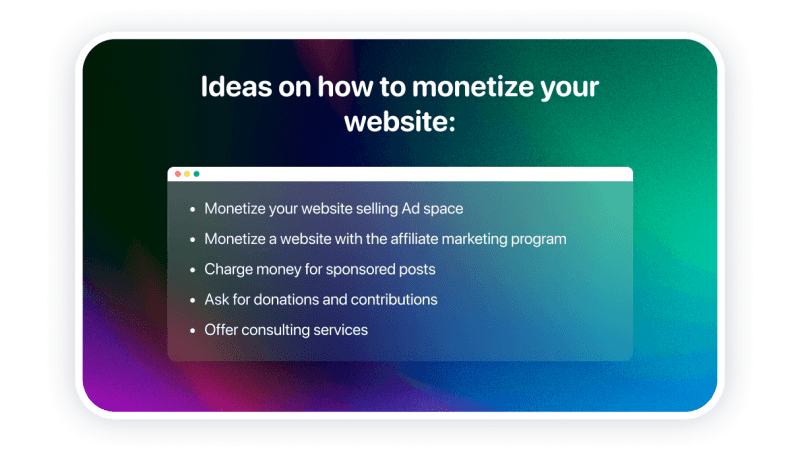
Landing page vs website: when to use a landing page
Selling one product to a whole group of products
Another difference between a website and a landing page lies in the fact that on the landing page, you can tell in detail about a popular product or offer users a group of products: blocks or boards for construction, ready-made food delivery, or sports equipment. The latest marketing trends dictated by the audience state that users no longer search for a specific product. They search for the ‘job-to-be-done.’
This means people want their issue to be resolved by your product even if they did not know it existed in the past. Thus, if you promote your product in several different ways and explain why it is useful in many spheres, you have a chance to attract drastically opposite categories of customers with a single landing page.
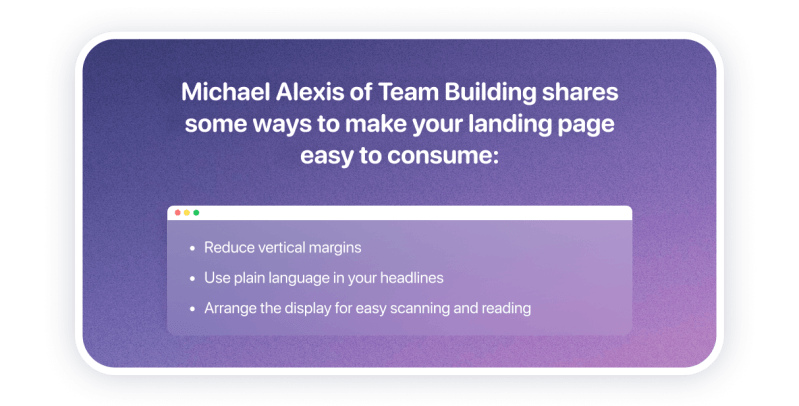
Fast start
Landing page setup does not take much time. Besides, you do not have to wait until the site appears in the search network. Go to the advertising account, add an ad and a link to the landing page and launch it: search engine results, social networks, or video hosting will promote your mini-platform quickly.
The need for high conversion
When users open a one-pager, they immediately see the application or registration window, and all the text on the page leads to the target action. If people are interested in an offer, they will immediately leave you contact information. On a multi-page site, a person can scroll through all the pages and forget about your offer, which was indicated in an advertisement or post. Simplicity and calls-to-action encourage high conversion. Thus, if you need a site that will bring you first clients within the first week, choose a landing page.
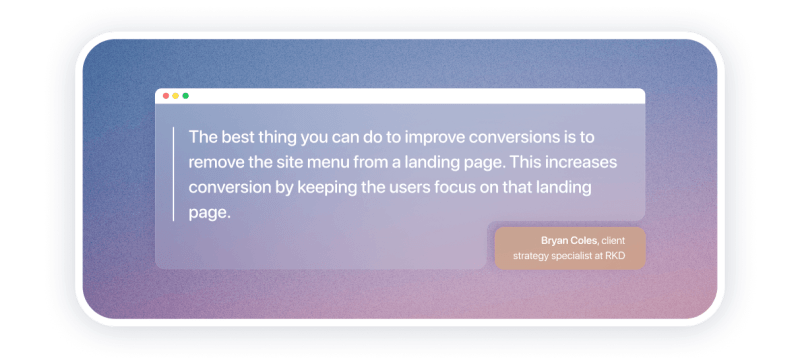
A/B testing
Which one to choose to take your MVP to the test: landing page or website? If you want to test an offer, button calls, or a product, all you need to do is create two versions of the page and run the ad. Since the visitor does not need to go anywhere else, in a few days you will get the result. You will know which offer or block is more interesting to users and disable the second version of the web page.
Do I need a landing page if I have a website?
For the purity of the recommendation, we will analyze some business areas separately to explain which option is better in which case:
Wholesale
If you have a wholesale company, then it’s great if there is both a landing page and a regular business site (or an online store, for example). Since they will solve different problems. The landing page will collect potential customers through their calls to action. Then the online store will monetize those people who are already your customers or want to become them after talking with the manager.
This scheme is used quite often. The best sequence in this term is the traffic of new people to the landing page with the “Access Directory” capture forms. After filling out the form, they get to the online store, and you receive the data for analysis.
Services
One-page sites are most often used specifically in the spheres of selling services. If a company provides services, then most likely there are no more than 3-6 of them, and they all go within the same area. In this case, there is no point in the site, since there is not much information to fill it, but the landing page can just combine all this within itself. That is, in this case, we can say that the landing is better.
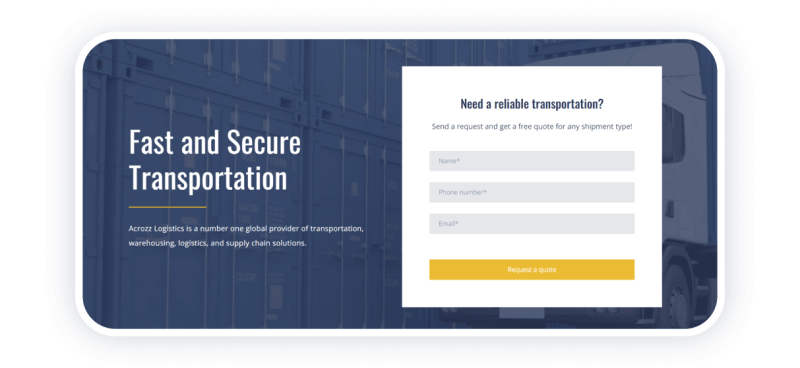
Example of landing page for service company
The most optimal solution, although not the most financially profitable, would be to make a separate landing page for each of the services. Then your audience will perceive them as a full-fledged site, although these are landing pages.
With this approach, you can attract different people to separate pages, where they will find all the answers to their questions. However, it is not logical to do this as a part of a full-fledged site because the starting information is always on the main page. Thus, which one is more useful for service promotions: landing page vs website? The answer is a landing page.
Retail
As we said above, the main task of such a landing page is to convert a visitor into contact or a deal. It can be adapted to almost any business, but there is one exception that you need to be careful with, and these are retail stores with a large number of products. A one-pager is not the best option to retail unless you sell one product in different models (no more than 10), for example, sketchbooks or a product that is new to the market.
In all other cases, making an online store out of a landing page will not work. A small number of goods will not motivate you to buy so much when a person is initially looking for an assortment. Too many products will make the landing page look cluttered.
If you are not sure about your niche, you can use Weblium landing page builder to test the applicability of such a site. Then, decide to order its full-fledged development or not. Finally, landing pages are suitable for all businesses. The main task is to understand before developing is its task and goals and apply them to the right matter.
How to make a landing page for my business
Landing page creation is divided into the following stages:
1. Thinking over the structure of the landing page.
Creating an approximate plan that will become the basis of the technical task. Here are some tips:
- Analysis of competitors. Compare yourself to competitors and international leaders in your niche. Write down your competitive advantages, as well as exciting points that you can borrow from competitors.
- Answer for yourself the question: ‘What should the user do after reading the visit to the landing page?’ This will be the target of the landing. This goal must be clearly stated to the performers.
2. Сontent writing
You need the text that will ‘sell’ the product. The main working scheme for writing the text is:
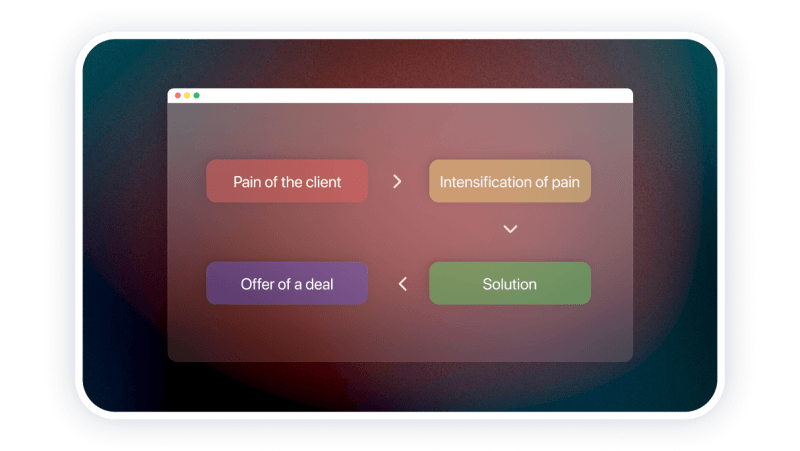
3. Design
Creating a complete design of the site following its functionality and implementation of the necessary functionality of the site.
4. Advertising setup
Launching contextual advertising to generate traffic to your landing page.
Thus, it makes sense to save up time and money by using a ready landing page template and filling it out with your information! The difference between landing pages and website is drastic. Especially when it comes to their development. Nevertheless, with Weblium, site-building becomes easy no matter what type of platform you choose.
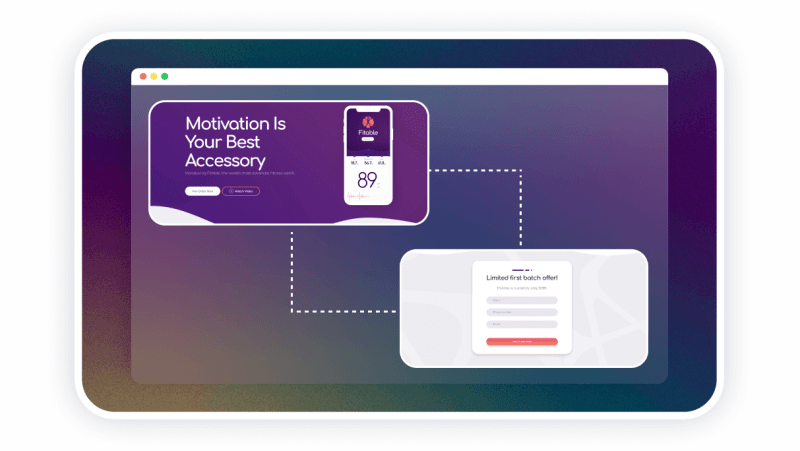
View this landing page template
How to make a website for my business
Weblium website builder allows you to create an effective promo page and a multi-page website. Several marketing tools are available for each site: mail services, analytics services, online chats, and chatbots.
Weblium allows you to change templates in one click, create a personal design from blocks, add pop-ups, banners, and contact capture forms.
Summary
The difference between a website and a landing page is only in the number of pages and possible functionality. A landing page does not need a full-fledged store functionality with a shopping cart and promotional codes. If you run an online store website with dozens of positions, a website is a must.
The task of the landing page is to increase the conversion rate and organize measures to increase it. In the case of other types of sites (depending on the type), conversion may be a secondary task, and the main task is to increase customer loyalty to the company, create an image, improve recognition, etc. Therefore, before choosing a website vs landing page, prioritize and ask yourself the question ‘What should I achieve with the help of my website?’
Rate and share this article with your friends. Subscribe to our blog, we are preparing more useful and interesting information!

